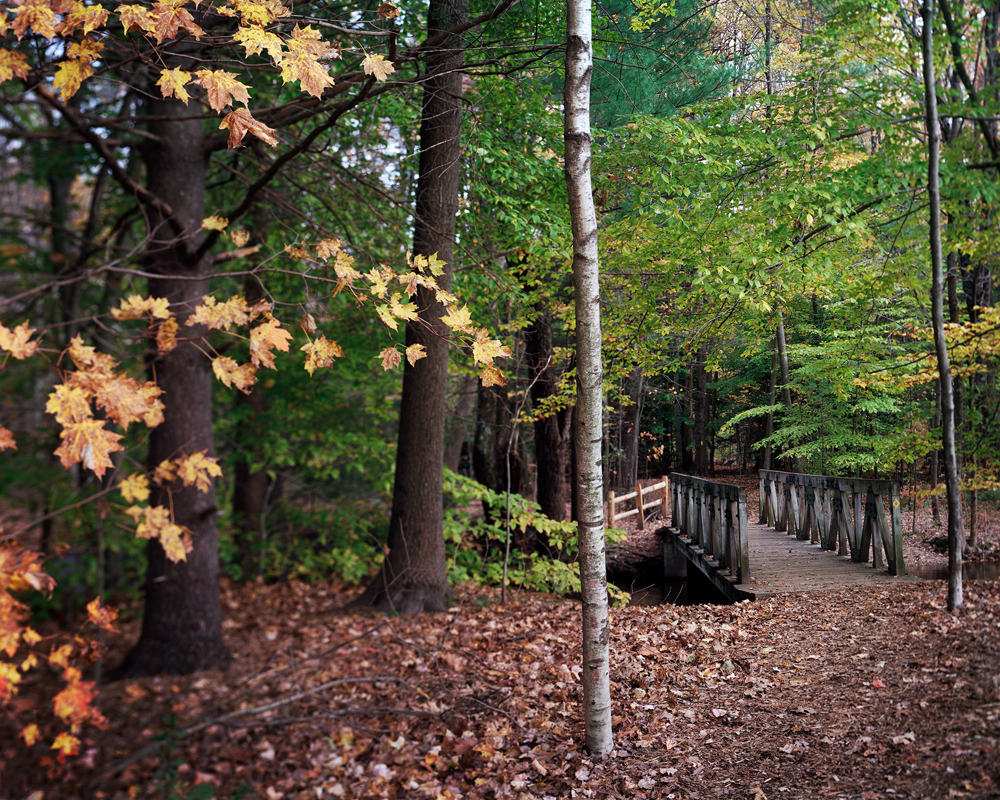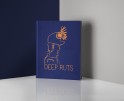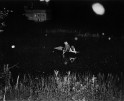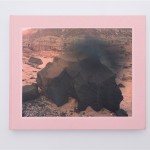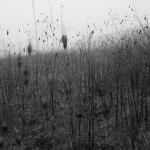Bruce Myren: Fort Juniper
For the past few days, we have been looking at the work of artists who submitted projects during our most recent call-for-entries. Today, Bruce Myren and I discuss Fort Juniper.
Bruce Myren is an artist and photographer based in Cambridge, MA. He holds a BFA in photography from Massachusetts College of Art and Design and earned his MFA in studio art from the University of Connecticut, Storrs in 2009.
Shown nationally and published internationally, Myren’s work has been featured in Fraction Magazine, afterimage, and View Camera Magazine as well as group exhibitions at the Phoenix Art Museum, RISD Museum’s Chace Center, Houston Center of Photography, and the William Benton Museum of Art, among others. His numerous solo exhibitions include showings at the University of the Arts in Philadelphia, Danforth Museum of Art, and Gallery Kayafas in Boston, where he is represented.
In 2012, he launched a successful Kickstarter fundraiser to complete his project “The Fortieth Parallel” and it has since been highlighted in the Huffington Post, Petapixel, Slate, Slate France, and the Discovery Channel online. Myren has presented on panels at the national conferences of the College Art Association and the Society for Photographic Education, spoken at colleges across the country as a visiting artist, and served as a juror for exhibitions at the Griffin Museum of Photography and Magenta Foundation’s Flash Forward Festival. He is a recipient of a 2014 Cambridge Arts Council Grant.
Currently, Myren works at the Boston Public Library’s Digital Lab, Palm Press Inc., and he is the owner of Bee Digital Lab. He has taught at Fitchburg State University, Amherst College, the Rhode Island School of Design, the University of Massachusetts Dartmouth, and Northeastern University. He was the Chair of the Northeast Region of the Society for Photographic Education from 2010-2016 and was on the board of directors of the Photographic Resource Center where he was Director during 2018.
In his work, Myren investigates issues of place and space, often via the exploration and employment of locative systems, either literal or metaphoric. Myren’s recent series include an investigation of the Fortieth Parallel of latitude; a new project on the legendary Washington Elm and its scions; a piece that documents the view from every place he has lived to where he lives now; and a study of the poet Robert Francis’s one-person house in the woods of Amherst, MA.
Fort Juniper
“Home is this little house in which I live, and much beyond it.” — Robert Francis, 1986
Fort Juniper is the name of a small one-person house in the woods of Amherst, Massachusetts. It was built by the poet Robert Francis (1901-87) in 1940 and served as his home until his death. Presently, it is used to host poets-in-residence through the Robert Francis Trust.
While wandering in the woods as a teenager, I often encountered an older man in a cap, someone I assumed to be a poet but never spoke to; many years later, I learned that the man who tipped his hat to me was Francis. It was in this area of Amherst where I first forged my sense of intimacy with the land and it was these same environs that Francis would walk for inspiration. Via Francis’ poems and prose, I am seeing my former hometown with new eyes and capturing the intersection of his understanding of this place with my own experience.
Many people know of the other two great poets from Amherst, Robert Frost and Emily Dickinson, and an additional aim of this project is to bring more attention to Francis and his work. For Francis, Fort Juniper was more than just an abode in which to reside, it was a fort to shelter him, a lens through which he viewed the world, and a mirror with which to observe his inner states. In researching Francis, I have read his autobiography, poems, and many of his newspaper columns. Tales of walks and neighbors, trees and chickens, these are the observations made with the eyes of a poet. It is from Francis’ reflections and poetry that I occasionally cull titles and inspiration for my images.
The area being photographed is growing naturally to include parts of the river that flow away from Fort Juniper towards my childhood home and other locations related to Francis. In essence, this project allows me entrance into a world I had left many years ago and the opportunity to explore how and where our lives interweave through time.
Daniel George: Tell us more about how this project began. Of course, you write about wandering in these woods as a kid. So, when did you decide to start making photographs at Fort Juniper?
Bruce Myren: The seeds of my “Fort Juniper” series started when I was in graduate school at the University of Connecticut or maybe just before. It was around 2007 and I was out photographing in my former hometown of Amherst, Massachusetts for another body of work called Markers: Memory, which is based upon the meeting of my childhood memories with place.
When I was out and about in the forest with my 8×10 camera scouting locations, I realized that I was just a few hundred yards from a house named “Fort Juniper,” the former dwelling of an Amherst-based poet. I knew this because I was already familiar with his work from watching a documentary film about him in high school and the mailbox still said “Robert Francis” on it even though he had passed in 1987.
This led me to call the University of Massachusetts Press, the publisher of his poems, who put me in touch with the executive of Francis’s estate, Henry Lyman, a former NPR radio host and a poet himself. I explained to him what I wanted to do — document the house and the landscape around the property. With Lyman’s blessing I was then put in contact with the Poet-in-Residence at the time, Donald Brees, who graciously let me into the house and explore its footprint and the property. It was from this fortunate and organic series of connections that the project began and grew.
I thought of this more open-ended project as a good way to explore my old haunts, including the beloved woods I grew up in, and also as a way to bring attention to Francis’ work. I have always been drawn to and fascinated by literature. When I was in undergrad at Massachusetts College of Art, for example, Barbara Bosworth had us read the book Ceremonial Time by John Hanson Mitchell, which is an interdisciplinary deep 15,000-year history of a one-square-mile plot called “Scratch Flat” in his hometown of Littleton, Massachusetts. Between this and how Barbara photographed the landscape herself, I realized that I could photograph, seriously and for an extended period of time, in my own back yard.
Another part of my thinking was this was a good chance to break from my typical method of photographing (a three-part panoramic technique that I had used for other projects, such as The Fortieth Parallel), to reembrace the idea of a single frame using my camera, and, perhaps above all, to have a more open approach to the landscape with fewer rules than my earlier more conceptually-based work.
Although I still made some rules for “Fort Juniper” — restricting myself to the house and its environs, including the river that runs behind it and past the modest cape house where I spent my adolescence — I also incorporated pictures from the Archives of the W.E.B. Du Bois Library at University of Massachusetts and the Jones Library.
DG: You mention that you are making these images with Francis’ poems and prose in mind. Do you feel that your photographs function as your own sort of poetic verse? If so, in what ways?
BM: I would like to think that my photographs are a kind of poetic verse, although I don’t think that I started the project with that in mine. Nonetheless, I now see that the more free-form nature of this series has allowed me to explore more nascent and intangible aspects of my practice and philosophy. Throughout this endeavor, I have read, and still read, Francis’s poems and prose and allowed his words to marinate before venturing into the woods with my camera.
I do think that photography and poetry speak in relatively similar yet distinct languages; that said, I also try to explore the combination of and space between the two. With each new image on a wall or line in a poem, there is cumulative layering effect. When these mediums are combined, syntax and sequence become even more paramount, and the reader becomes a viewer and vice versa. It is in this liminal space that I want my work to reside.
DG: You write that “this project allows [you] an entrance into a world [you] had left many years ago and the opportunity to explore how and where our lives interweave through time.” Looking back with your current perspective and experiences, what sort of things have you discovered? Perhaps about yourself, the land, etc.?
BM: I discovered that I never really left Amherst and understood what a profound effect this time and place had on me. Sure, I moved away when I was 20 years old, but my connection to that landscape has only grown since then. I have watched the town and topography change over time, much like how the river has woven its way through its surrounding terrain, altering whatever is in its path in ways large and small. I have found that the landscape itself is, in a way, one of my “homes,” writ large, more so than our actual rented house in Amherst and numerous apartments in which I have lived over the years. Being in the space surrounding Fort Juniper and Amherst became more akin to being at my current abode in Cambridge; they both evoke a sense of place and peace.
Along with Fort Juniper, your photographic work tends to address elements of history and memory associated with place. What do you suppose prompted this general interest within your creative practice?
There are a few experiences in my life that I feel created my interest in place, memory, and history. One of the earliest is when I first moved to Amherst I was introduced to the neighborhood by another young boy. He took me for a walk along a dirt road to some railroad tracks that led it the center of town, where he left me to find my own way home. I was scared, but it made me pay attention to where I was. This experience was later wedded with my interest in maps, mapping, and related technology.
Additionally, my father was a surveyor and studied to be a civil engineer. His passion for those disciplines rubbed off a bit and led me to explore landscape in my work. But also, I have a specific memory of my father sitting on the front stoop of our apartment, smoking a cigarette, and staring at the woods across the parking lot. He had the same kind of look when I would stare out into the ocean, a kind of faraway but engaged look in his eyes. It was these that influenced my interest in prolonged looking and repeated returns to the same location.
DG: Along with Fort Juniper, your photographic work tends to address elements of history and memory associated with place. What do you suppose prompted this general interest within your creative practice?
BM: There are a few experiences in my life that I feel created my interest in place, memory, and history. One of the earliest is when I first moved to Amherst I was introduced to the neighborhood by another young boy. He took me for a walk along a dirt road to some railroad tracks that led it the center of town, where he left me to find my own way home. I was scared, but it made me pay attention to where I was. This experience was later wedded with my interest in maps, mapping, and related technology.
Additionally, my father was a surveyor and studied to be a civil engineer. His passion for those disciplines rubbed off a bit and led me to explore landscape in my work. But also, I have a specific memory of my father sitting on the front stoop of our apartment, smoking a cigarette, and staring at the woods across the parking lot. He had the same kind of look when I would stare out into the ocean, a kind of faraway but engaged look in his eyes. It was these that influenced my interest in prolonged looking and repeated returns to the same location.
DG: I’d like to hear more about your use of Francis’ line, “Home is this little house in which I live, and much beyond it.” What significance does this carry in relationship to this project? And beyond?
BM: This quote speaks to my own interpretation of the concept of home, which has changed as I have gotten older. A home is not just some walls, a floor, and ceiling, but multiple areas that we inhabit over time.
It wasn’t until I realized I was photographing my own “home,” broadly speaking, via my exploration of Fort Juniper and the surrounding landscape, that I started to realize that I was onto something. For me, in that wonderfully concise and astute quote, Francis is talking about an expanded sense of home that I have longed for my whole life.
Posts on Lenscratch may not be reproduced without the permission of the Lenscratch staff and the photographer.
Recommended
-
ALEXIS MARTINO: The Collapsing Panorama April 4th, 2024
-
The International Women in Photo Association Awards: Lorraine Turci: The Resilience of the CrowMarch 16th, 2024
-
Julie Rae Powers: Deep RutsMarch 2nd, 2024
-
Interview with Peah Guilmoth: The Search for Beauty and EscapeFebruary 23rd, 2024
-
Interview with Kate Greene: Photographing What Is UnseenFebruary 20th, 2024

